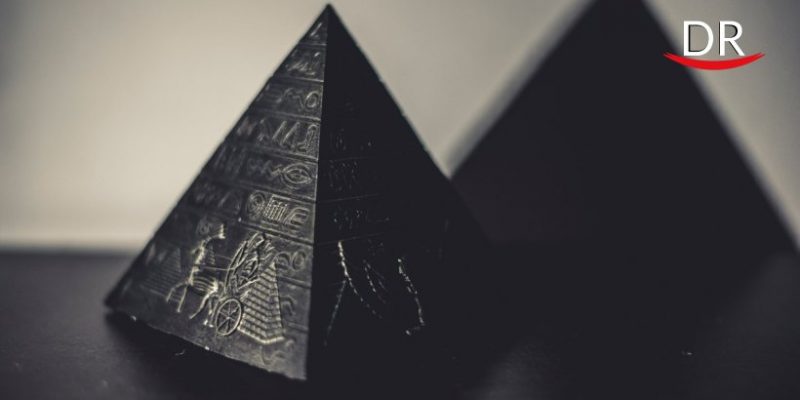Causes | Insights | Management
Papilla Reconstruction
Interdental papilla is the portion of the gingiva, which occupies the space between two adjacent teeth. It is very important from an aesthetic point of view, because its absence can lead to cosmetic discomfort of the patient, especially if present in the esthetic zone. Other than that, it may result in phonetic difficulty and food impaction. This absence or loss of the interdental papilla in the aesthetic zone results in the formation of so-called Dark Triangle / Black Triangle which poses a great challenge for dental treatment.
Anatomy of Interdental Papilla
Interdental papillae are the extensions of gingiva filling the spaces between neighbouring teeth. It is formed by dense connective tissue covered by oral epithelium and may be influenced by the height of the alveolar bone, the distance between the teeth and interdental contact point. Because the tooth mass bordering the interdental papilla is less in the anterior teeth, the interdental papilla is narrow and has a pyramidal shape with its tip just below the contact point. In posterior teeth, due to the presence of larger tooth mass, it is wider and with a ridge-shaped concave area .
In the anterior teeth, the location of contact points varies. For example, the contact point between two central incisors is located at the incisal third of the labial aspect. The contact point between central and lateral incisor is located in the middle and the contact point between the lateral incisor and canine is located at the cervical third. In other words, we can say that the interdental papilla between two central incisors is filled with more space than the other teeth in the anterior region.
Factors Determining the Presence or Absence of Interdental Papilla
There are multiple factors which determine the presence or absence of interdental papilla. These factors include –
- changes in tooth alignment during orthodontic treatment,
- loss of periodontal ligament resulting in recession,
- loss of alveolar bone height in relation to the interproximal contact,
- angulation of the roots,
- presence of crowns and
- active periodontal inflammatory diseases.
Active periodontal inflammatory diseases are associated with the loss of interdental papilla/papillae. Periodontal pockets with probing depth greater than 3 mm will lead to an increase in plaque retention, inflammation, and recession. As the resorption of alveolar crest progresses, the distance between the contact point and the alveolar bone crest increases, resulting in loss of interdental papilla.
Classification of the interdental papilla loss

Normal
The interdental papilla occupies the entire embrasure space apical to the interdental contact point/area.
Class I
The tip of the interdental papilla is located between the interdental contact point and the level of the CEJ on the proximal surface of the tooth.
Class II
The tip of the interdental papilla is located at or apical to the level of the CEJ on the proximal surface of the tooth, but coronal to the level of the CEJ mid-buccally.
Class III
The tip of the interdental papilla is located at or apical to the level of the CEJ mid-buccally

Correction of Receded Interdental Papilla
Various surgical and non-surgical techniques have been introduced with the sole intention of either reconstruction or regeneration of Papilla.
- Orthodontic Approach
- Composite Bonding
- Semilunar Coronally Repositioned Papilla
- Tissue Engineering
- Autologous Fibroblast Injection
- Dermal Fillers: Hyaluronic Acid
Current Best Approach
In 2009, Dr Clark Burgess invented Bioclear, a non-invasive, additive method which makes a direct restorative solution to black triangles both simple and predictable. It is very different from traditional composite bonding in both technique and results.
The Bioclear matrices are anatomically shaped matrices, which allow you to recreate the correct emergence profile and anatomy of the restored tooth. They enable dentists to successfully treat a variety of clinical situations including standard class III restorations and more complex black triangle and diastema closures.

The process of injection-overmoulding of the composite is used to restore the tooth with Bioclear matrices. The restoration is shaped using a combination of fine diamond burs and Soflex discs, however, no interdental finishing or shaping is required as the matrices provide the correct shape and a smooth Mylar finish.
The Bioclear matrices form one component of the Bioclear Method, which allows dentists to predictably produce longer lasting, stronger, and aesthetically superior composite restorations.
Current New Approach
Reconstruction of lost interdental papilla can be done using dermal fillers or hyaluronic acid gel.

After introducing a local anesthetic agent, less than 0.2 ml of the HA gel is injected at the sites 2–3 mm apical to the coronal tip of the papilla. The patient is instructed not to brush on the day of treatment but maintain oral hygiene, and after 24 hours, using a soft bristle toothbrush at the anterior teeth to start their routine oral hygiene measures and avoid using dental floss at the sites of treatment. Result is usually seen after 3-4 weeks. The shot can be repeated in case of inadequate results.
The black triangle is an upcoming complaint of aware and esthetically conscious patients. As clinicians, we must be aware of all the options best suited for the patient and skilled enough for the desired patient outcome.
DISCLAIMER : “Views expressed above are the author’s own.”




















Comments